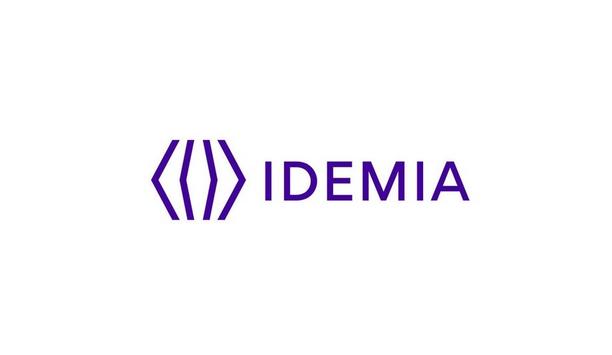IREX - Experts & Thought Leaders
Latest IREX news & announcements
IDEMIA Public Security, the global provider of biometric and secure identity solutions for government, travel, and law enforcement has once again proven its leadership, showcasing the most accurate algorithms in the National Institute of Standards and Technology’s (NIST) latest Evaluation of Latent Fingerprint Technologies (ELFT) tests. NIST ELFT NIST ELFT is the global benchmark for latent fingerprint and palm print identification used to identify latent fingerprints and palm prints found at crime scenes. For the fourth time in a row, IDEMIA Public Security leads the market with the most accurate and fastest (among the most accurate) algorithms. Low FPIR IDEMIA demonstrated vastly superior performance in palmprint identification In addition to accuracy, which increases the chances of identifying leads in law enforcement investigations, IDEMIA’s algorithms showed a very low False Positive Identification Rate (FPIR at less than 8% whereas the nearest competitor is at above 11%), allowing the latent examiner to process more cases, accurately and faster. Furthermore, IDEMIA demonstrated vastly superior performance in palmprint identification, another highly significant contribution. Using this technology, the human-artificial Intelligence (AI) duo becomes more productive, and the examiner’s valuable time is optimised. Fast, accurate, and fair solutions IDEMIA is committed to the highest level of performance to provide fast, accurate, and fair solutions. As a result, IDEMIA’s customers can solve crimes more quickly, while the communities and the world are made a safer place. These ELFT results come on the heels of other recent high-ranking performances in NIST benchmarks, further demonstrating IDEMIA’s technology leadership. These include: FINGERPRINT: 1 in the NIST Proprietary Fingerprint Template (PFT) III benchmark on all test datasets in December 2023, 1 in NIST ELFT February 2024, 1 in the mFIT Challenge in June 2022, FACE: 1 in fairness and demonstrated lack of bias for the NIST Face Recognition Vendor Test (FRVT) in January 2023, IRIS: 1 in the latest NIST Iris Exchange (IREX 10) ranking in September 2023. Multi-Biometric Search Services (MBSS) solutions "Based on our performance in this benchmark, we can confirm our long-term commitment to investing in further developing the technology and creating continuously more value for the customers. Our ability to offer cutting-edge products goes hand in hand with our long-standing 50-plus-year pledge to provide law enforcement agencies with the best systems on the market." "I am very proud to announce that the latest algorithms submitted to this benchmark are already available in our flagship Multi-Biometric Search Services (MBSS) solutions. I would like to congratulate our teams of developers on their hard work and innovation," said Jean-Christophe Fondeur, IDEMIA Public Security Chief Technology Officer.
Insights & Opinions from thought leaders at IREX
AI has opened doors to many transformation opportunities and increasingly minimised many risks -- personal and economic -- that are alarming today. And illicit trade is one of those pains AI can offer a promising solution against. Illicit trade is a serious threat and problem that affects governments and societies on every level. While governments lose financial funds in tax revenues, thriving businesses are losing potential customers, and customers are getting tricked into purchasing counterfeit, low-quality products. Transnational organised crime generates revenue of $2.2 trillion through transnational criminal organisations, complicit corrupt facilitators, and other threat areas. The list of criminal activities is long and involves such horrific crimes as trafficking of narcotics, opioids, arms, humans, fake medicines and other counterfeit and pirated goods; illegal tobacco and alcohol; illegally-harvested timber, wildlife, and fish; pillaged oil, diamonds, gold, and other natural resources and precious minerals; stolen antiquities; and other contraband or valuable items sold across streets, social media, online marketplaces, and the dark web. In short, illicit trade is a contributing cause to large-scale insecurity and instability across markets. AI-driven technologies Here is where revolutionary AI-driven technologies come in, with their capability to fight illicit trade across markets. AI technologies in this specific application promise to help build safer and more secure communities in the future. There are a few ways that AI can support the ongoing fight against illicit trade on a global scale in a tangible way. Transnational organised crime generates revenue of $2.2 trillion For financial transactions at risk of fraud and money laundering, tracking has become an increasing headache if done manually. As a solution to this labour-intensive process, AI technology can be trained to follow all the compliance rules and process a large number of documents -- often billions of pages of documents -- in a short period of time. Among these documents widely in circulation, most have an unstructured and inconsistent format -- from invoices to insurance documentation -- are a complex system to tackle; in this whirlwind of pages, the likelihood of non-compliant and misrepresented figures to go by unnoticed. But this is also where AI can thrive as solutions become a necessity, enhancing humans’ capabilities of identifying fraud risks in the early stages. Relying on natural language processing, the technology can begin interpreting the text from the scanned and digitised documents in order to process trade information at high speed. In this context, AI-powered solutions are capable of comparing, contrasting document information and identify anomalies worth looking into further. By automating a large portion of the process, AI-driven technology allows the staff to focus on more pressing, high-involvement issues that require human judgement while saving time on the time-consuming manual work of analysing documents by hand. Identifying covert interactions between criminals As criminal networks become increasingly intricate in their illegal operations, cutting-edge AI technology is crucial in the battle against it. In 2019, EU launched a project with the goal to deploy advanced AI technology and robots to identify smuggling across the borders of Portugal, Estonia, Italy, Greece, Bulgaria, Romania and Hungary. With the help of AI, it will be possible to send drones and autonomous vehicles to the most dubious border areas in order to enforce border control and detect smugglers quickly and efficiently. Illicit trade triggers a chain reaction of negative impact across industries, governments and individuals The issues the EU is trying to address through the project include drug and weapon smuggling, as well as human trafficking. From tight border control tracking crossings to communication monitoring to identify covert interactions between criminals on both sides of the border, the project is one among many that will expand the scope of solutions to the illicit trade problems today. AI’s contribution is significant on many levels: from predicting crime and threats to safeguarding public health and safety (in face of human trafficking, counterfeit medicines, and toxic products), these are simply inklings of major shifts that AI technology promises for the future of the battle against illicit trade. So why is fighting illicit trade so crucial? Here are a few reasons why AI’s role in fighting this global issue is crucial. In a world where customers run the risk of being deceived and tricked into buying counterfeit products, companies who provide the original products suffer through the loss of revenue and market share. The same companies are also robbed of their intellectual property and proprietary data. Furthermore, people who are employed in these companies run the risk of losing their jobs as a result of revenue and market share loss. And finally, the last straw is the loss of brand integrity and reputation to the need to compete with low-quality, sometimes even dangerous counterfeit products. Just like a domino effect, illicit trade triggers a chain reaction of negative impact across industries, governments and individuals. And it’s time for AI to step in and stop it.
Smart cities, airports, stadiums, hospitals and other organisations are now liaising with government bodies and law enforcement to propel a new dawn of collaborative security and communication. The influx of new technology coupled with the ever-changing political and social landscapes has meant security is having to evolve. Artificial Intelligence is now allowing law enforcement, security personnel and organisations to a transformational method of fighting crime, maintaining public security and significantly finding persons of interest. AI-powered surveillance cameras Utilising surveillance cameras with implemented AI has revolutionised finding missing persons. Facial recognition and IREX.ai’s “Searchveillance” have equipped both the public and private sector with the tools to collaboratively work together in finding persons of interest. The influx of new technology coupled with the ever-changing political and social landscapes has meant security is having to evolve Finding missing persons has been an underfunded and challenging issue across society, with many countries having no funding at all after the initial police investigation. Through artificial intelligence, surveillance cameras will never sleep on finding missing people by setting up alerts for once a missing person appears under surveillance. How it’s happening Technology like IREX.ai has delivered an AI collaborative security solution which is implemented into surveillance cameras enabling them to become “smart cameras”. Both public and private sector have not been able to collaborate through utilising their existing cameras, which are now powered by AI-backed smart video technology. With surveillance systems now veering toward becoming cloud based, this now allows an unlimited number of cameras for an organisation or city to connect to. The AI platform is helping bringing about a collaborative network to help monitor crowded public areas in real time, something that would have taken a lot of manpower, time and cost to produce. Quicker response through “searchveillance” This has now become a crucial element in the fight against COVID-19. The ability to track and trace has been very effective but this particular AI module may only just be getting started in the fight to find persons of interest. When an individual goes missing or is abducted, every second is crucial along with information gathered. Unfortunately, this brings in human-error, when a person believes they may have seen the person of interest, it can lead law enforcement and authorities critically, in the wrong direction. AI-powered Facial Recognition helps eliminate human-error through 99.5% accuracy success, leading authorities to definitive sightings and factual information through the help of AI. “Searchveillance” enables authorities to liaise with the public and private sector organisations who have implemented the AI into their surveillance to run a single search with the person of interest’s photo. Instantaneously the user receives immediate results of, if and when this person last appeared under surveillance. Long-term missing persons It’s common knowledge that after 72 hours, statistically speaking the chance of finding the individual quickly diminish, but that doesn’t mean people stop searching. This week alone, September 2020, US Marshalls found and rescued 25 missing children in Ohio, many of whom had been missing for years. AI-powered facial recognition helps eliminate human-error through 99.5% accuracy success Implementing AI into surveillance cameras is becoming more frequently adopted around the world, enabling alerts in surveillance cameras and notifying appropriate law enforcement when a missing person appears under surveillance are all extraordinary tools. The alert system from the persons photo in the software. Facial recognition allows law enforcement to receive real-time footage of the missing person and their location. It is of great assistance for law enforcement to simply receive a notification and a real time feed of individual they are looking for. Security is becoming a more collaborative effort In light of recent events throughout the world, with protests surrounding police brutality, rioting, violence and deaths, security is evolving and it has to. Enabling technologies and building security collaboration and communication platforms is assisting in the fight to find missing people. It’s not just smart cities and smart airports who are providing a fishing net for find persons of interest, it’s also stadiums. The Superbowl and other major sporting events generate some of the biggest human slavery and trafficking busts of the year. Stadiums are now harnessing the responsibility to help counteract this and set up these alerts, utilise the AI in their cameras and collaborate with authorities, thus playing their part in finding persons of interest. IREX.ai has helped deliver the AI and the platform for collaborative security and communication, as technology grows and becomes more in our lives than we care for it to be, you often forget of the results it can provide, such as reuniting a family.
Stadiums around the world are still paralysed from the effects of COVID-19. Fans and spectators in masses have been absent from stadiums since April and there doesn’t seem to be a concrete plan on how or when they’ll be able to return to near capacity. The NBA recently opted to form a bubble philosophy concept in Disney’s facilities, although it’s been a relative success, it’s also been a $200 million temporary solution. This then begs the question: How long can stadiums survive like this without spectator’s present? History tells us that stadiums, venues and sport recover from disasters, so what can stadiums do to speed up the process? This is the catalyst for AI to be integrated on mass level to stadiums around the world. AI is the answer AI’s role in getting fans and spectators back is huge, through capabilities such as: Social Distance Monitoring Crowd Scanning/Metrics Facial Recognition Fever Detection Track & Trace Providing Behavioural Analytics Technologies such as IREX.ai is now working alongside National Leagues, Franchises and Governing Bodies to implement AI surveillance software into their CCTV/surveillance cameras. This is now creating a more collaborative effort from the operations team in stadiums, rather than purely security. Stadiums around the world are still paralysed from the effects of COVID-19 AI surveillance software such as IREX.ai when implemented into the surveillance cameras can be accessed by designated users on any device and on any browser platform. Crowd metrics Arming stadiums with AI-powered surveillance tools can detect crowd metrics such as “people counting” and “group statistics”. This ensures stadium personnel can monitor social distancing with precision, accuracy and immediately. Alerts can be set up throughout parts of the stadium to alert senior staff members when overcrowding can appear with real-time videos, analytics and photos to their hand-held device, such as a smartphone. Fever detection Thermal cameras have been implemented throughout facilities including stadiums and are helping assist to spot people with elevated temperatures. What IREX.ai implements is an alert system, coupled with facial recognition of any individual(s) that read an elevated body temperature. This alert system then provides security and health officials with a photo of the individual with the elevated body temperature, meaning staff can react quicker to the situation prevent this individual from entry. Pandemic monitoring by facial recognition Thermal cameras have been implemented throughout facilities including stadiums and are helping assist to spot people with elevated temperatures Through facial recognition, staff members will be able to locate individuals through simply uploading a photo. It has never been easier to find a person of interest. With masks becoming an everyday part of society, facial recognition has come under scrutiny regarding the accuracy when a mask is worn. Irex.ai still maintains a 96% accuracy with individuals wearing masks and can set up alerts for any individuals not wearing a mask. Another important aspect of facial recognition is finding persons of interest quickly through technology like IREX.ai’s “searchveillance”. The future is here. Designated staff can track a person from when they enter the stadium by simply uploading their photograph. An example of how this can assist stadium personnel is to help relocate lost children inside the stadium with their guardians/parents when they are separated. Another attribute would be any individuals banned from entering the stadium would trigger alerts once they appear under surveillance, a fantastic collaborative tool to use with Law Enforcement. Return on investment With security solutions, one of the biggest issues with any security investment is a lack of an ROI. This is where AI security is breaking the mould. The ability to provide business analytics, consumer/fan behaviours, traffic patterns, etc, allows other departments within the organisation to gain vital information that can assist with their strategies and practices. Stadium security will never be the same in a post-COVID world, so why will its practices stay the same? AI & Stadiums is no longer the future, it’s the 2020 solution.
One system, one card
DownloadAligning physical and cyber defence for total protection
DownloadUnderstanding AI-powered video analytics
DownloadEnhancing physical access control using a self-service model
DownloadHow to implement a physical security strategy with privacy in mind
Download












